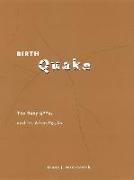- Start
- Birth Quake
Birth Quake
Angebote / Angebote:
As sociologists and economists have gradually learned, the relative size of a particular generation can significantly affect the behavior of its members. In this book, Diane J. Macunovich demonstrates the varied shapes these effects can take, from economic shifts to social ones to far more tumultuous events. The stock market crash of 1929, the "oil shock" of 1973, and the "Asian flu" of the 1990s-all were significant economic events tied to disruptions in the established birth-rate pattern, disruptions Macunovich calls "birth quakes."Between 1965 and 1985, the Western world-and the United States in particular-experienced a staggering amount of social and economic change. Marriage and fertility rates plummeted, divorce, drug use, crime, and suicide rates climbed, cohabitation, single motherhood, and female labor force participation became commonplace. In economic terms, the first half of the period saw experts revising cherished models to explain the new phenomenon of "stagflation", the second saw an unprecedented decline in real wages and family income, causing many to bemoan the shrinking middle class and the end of the American Dream. Macunovich argues that the common thread uniting all of these changes was the post-World War II baby boom-in particular, the passage of the baby boomers into young adulthood. Her focus is on the pervasive effects of changes in "relative cohort size"-the ratio of young to middle-aged adults-during the period, as masses of young people tried to achieve the standard of living to which they had become accustomed in their parents' homes despite dramatic reductions in their relative earning potential. The detailed empirical analyses presented here illustratejust how significant such effects can be-and demonstrate that no discussion of business or economic trends can afford to ignore them.
Folgt in ca. 15 Arbeitstagen
